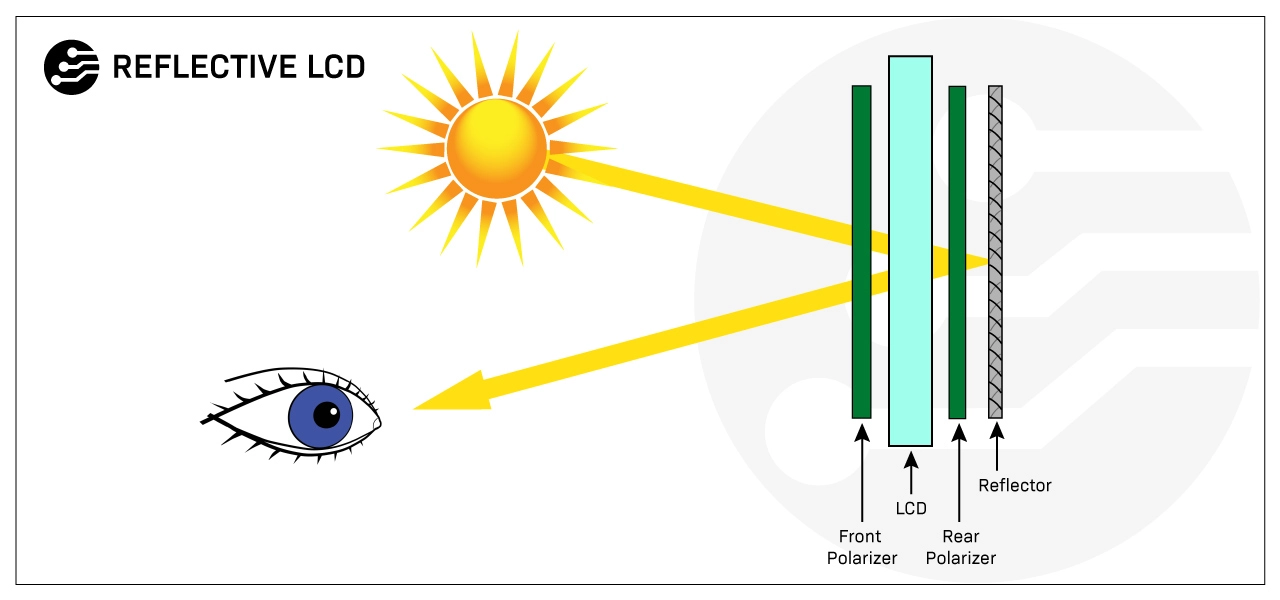Reflective LCD displays
Blaze Display Technology Co., Ltd. | Updated: Nov 27, 2018
Reflective displays rely on bright ambient light to be visible. There is no backlight source inside this kind of display; instead, light is reflected from the surrounding environment for the pixels to be visible.
How do reflective displays work?
Reflective LCDs work by using a reflective layer along with the polarizing filter, to reflect the light back to the user's eyes instead of emitting light from a backlight. The liquid crystal layer modulates the amount of light that is reflected back, creating the desired image.

Reflective LCD uses
Reflective LCDs are great for outdoor or sunlight-readable applications where the device is exposed to direct sunlight. These displays are also used in small handheld devices where power consumption is a concern.
You can also find reflective display modes in graphic COG LCDs and character LCDs with positive display types. The most common devices using reflective LCDs are outdoor applications such as GPS devices and portable devices such as e-readers, camera viewfinders, and digital watches.
Advantages of reflective LCDs
l Low power consumption: Reflective LCDs do not require a backlight, which reduces their power consumption and extends the device's battery life.
l High visibility in sunlight: The reflective nature of the display allows it to be easily read in bright sunlight.
l Thin and lightweight: Reflective LCDs are thinner and lighter than transmissive LCDs since they don't have a backlight, making them well-suited for portable devices.
Disadvantages of reflective LCDs
l Limited viewing angles: Reflective LCDs have a limited viewing angle, making it difficult to read the display from certain angles.
l Poor performance in low light: Reflective LCDs are not well-suited for low-light environments, as they rely on bright ambient light to be visible.
l Reduced color depth: Reflective LCDs typically have a reduced color depth compared to transmissive LCDs, which can affect the overall image quality.
- Previous:LCD display color principle introduction
- Next:LCD Viewing Angle

